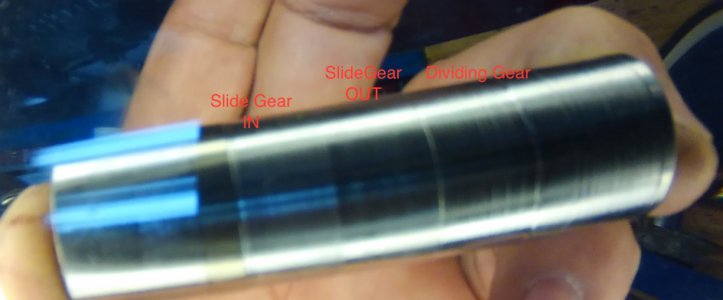- Joined
- Aug 13, 2020
- Messages
- 1,342
I've been experimenting with cutting the feed rate on my 12" Atlas lathe. With the slide gear out, I get .0084"/turn. With it in, it is .0042"/turn. I added a step down gear to bring it down to .0021"/turn.
I've attached a picture of the wrist pin from a Corvair piston that I was experimenting with yesterday. It is .865" diameter. I'm turning at 725rpm, using a carbide insert to take off .005".

I got the best picture I could with it under my magnifying glass, but it is still a bit blurry. The tool marks are very clear in first section. It's a very fine thread, as it is often described. With the slide gear out, that is cleared up for the most part, but it still isn't completely smooth. Once I instal the step down gear, it is the smoothest I've ever turned anything, but there are these rings at random intervals that I can't explain. I recut this several times, and it's always the same.
What is going on here? And, how do I make it stop?
I've attached a picture of the wrist pin from a Corvair piston that I was experimenting with yesterday. It is .865" diameter. I'm turning at 725rpm, using a carbide insert to take off .005".

I got the best picture I could with it under my magnifying glass, but it is still a bit blurry. The tool marks are very clear in first section. It's a very fine thread, as it is often described. With the slide gear out, that is cleared up for the most part, but it still isn't completely smooth. Once I instal the step down gear, it is the smoothest I've ever turned anything, but there are these rings at random intervals that I can't explain. I recut this several times, and it's always the same.
What is going on here? And, how do I make it stop?
